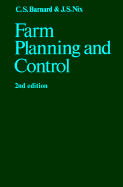Book contents
- Frontmatter
- Contents
- Notice to readers
- Preface to the first edition
- Preface to the second edition
- Selected metric conversion factors
- Part I The organisation of resources
- 1 The planning environment and the managerial function
- 2 Basic principles and concepts of planning
- 3 The organisation of capital – general
- 4 The organisation of capital – machinery, buildings and land
- 5 The organisation of labour
- Part II The organisation of enterprises
- Part III The combination of enterprises
- Part IV The control of resources and enterprises
- Selected further reading
- Index
5 - The organisation of labour
Published online by Cambridge University Press: 01 June 2011
- Frontmatter
- Contents
- Notice to readers
- Preface to the first edition
- Preface to the second edition
- Selected metric conversion factors
- Part I The organisation of resources
- 1 The planning environment and the managerial function
- 2 Basic principles and concepts of planning
- 3 The organisation of capital – general
- 4 The organisation of capital – machinery, buildings and land
- 5 The organisation of labour
- Part II The organisation of enterprises
- Part III The combination of enterprises
- Part IV The control of resources and enterprises
- Selected further reading
- Index
Summary
Labour costs – including the value of the farmer's own manual labour–average 20 to 30 per cent of total costs on a high proportion of farm types, including those where dairying, cereal production and beef and sheep are major enterprises. The proportion is highest on intensive arable and fruit farms, where it can be as much as 40 per cent.
Special features of farm labour as a resource
As one of the basic farm resources, labour has certain special features, although the first two mentioned below are not unique to this particular factor of production.
First, the service of regular labour is supplied as a continuous flow. It cannot be stored until wanted, like seed or fertiliser. If labour is unused at any time it is wasted for good.
Secondly, regular labour comes in 'indivisible' units. It is not possible to hire half a man. This point is of special relevance in agriculture because of the small numbers employed on the majority of farms. Most farmers who employ any workers at all have only one or two men. 'Saving a man' is thus a very different proposition compared with a factory employing thousands of workers. Some flexibility is provided, however, by the use of overtime and the employment of casual or contract labour. From the cost standpoint too, the employment of a proportion of youths or women adds flexibility.
Thirdly, on a high proportion of farms some of the manual labour, often all, is supplied by the farmer himself.
- Type
- Chapter
- Information
- Farm Planning and Control , pp. 126 - 154Publisher: Cambridge University PressPrint publication year: 1980



